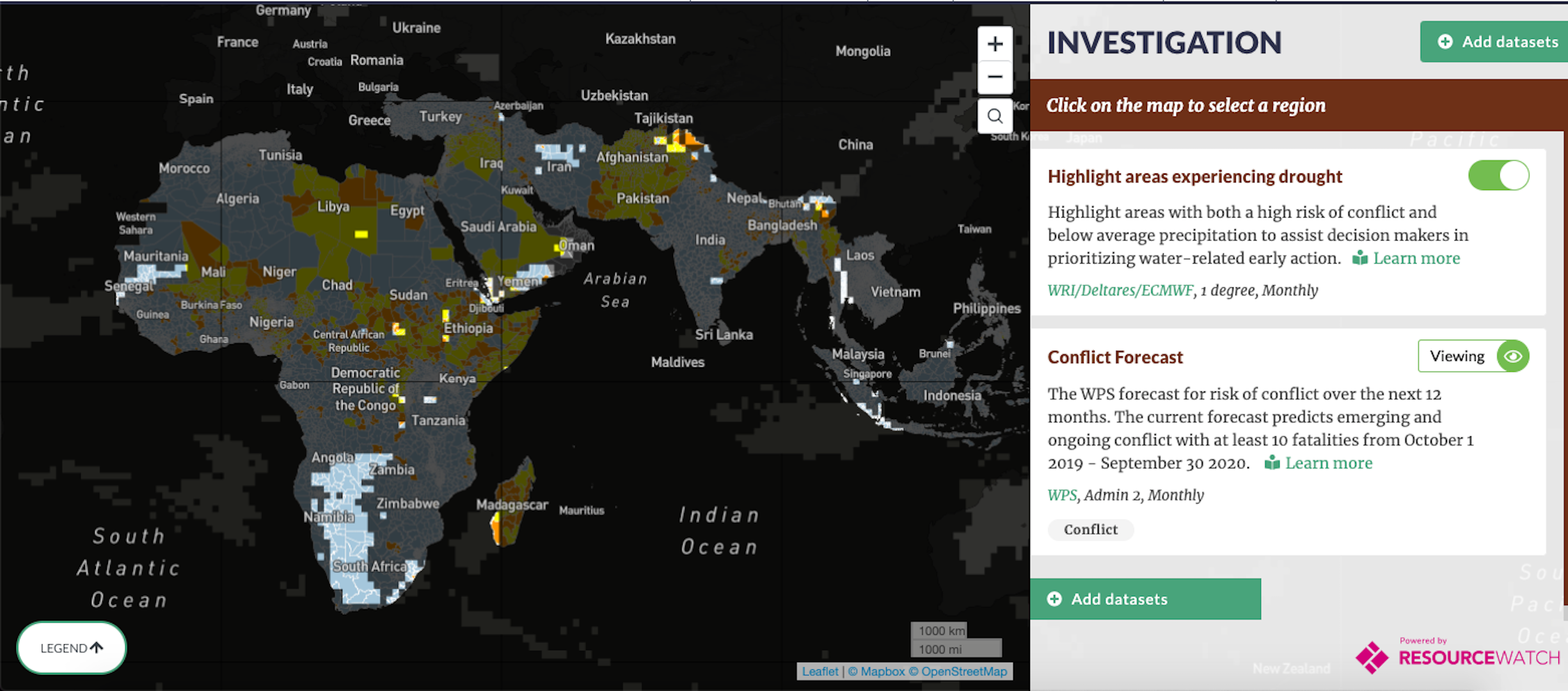This Map Shows You Where Violence Could Break Out Because There’s Not Enough Water

Credit to Author: Alex Lubben| Date: Thu, 09 Jan 2020 19:04:00 +0000
Besides the politics that make the Middle East a powder keg of instability, there’s another troubling factor that could predict where conflict will erupt: water scarcity.
That’s the groundbreaking part of a new predictive tool developed by researchers from the Dutch government–funded Water, Peace and Security Partnership and showcased recently at the U.N. Security Council. It’s the first time that environmental factors like drought are being used to predict where the next conflict will happen — not just in the Middle East but anywhere in the world.
The new tool is designed mostly for local policymakers and governments to help them intervene before conflict actually breaks out, but anyone can use it.
Here’s how it works: Using satellite image data, scientists can measure how much moisture is transpiring from crops, which gives them a sense for how healthy they are. If the crops aren’t doing well, the risk factor for conflict goes up. They combine that data with more traditional methods of predicting conflict, like political instability, to paint a fuller picture of how likely a fight is to break out.
“The understanding is: Maybe we can predict [the next] Syria,” said Charles Iceland, who directs water initiatives at WRI, and was involved with designing the conflict prediction tool.
Indeed, the drought that started in 2006 in Syria — likely the worst drought in nearly a millennium and made two to three times more likely due to climate change — killed off 85 percent of the country’s livestock and pushed farmers into urban centers as their farms failed. The estimated 1.5 million people who were forced into cities created social unrest, which in turn, researchers say, exacerbated the civil war that led to the ongoing Syrian refugee crisis.
“The drought had displaced Syrians long before the conflict began," said Francesco Femia, president of the Center for Climate Security previously told VICE News. “And what is frightening is that analysts who study the region completely missed it.”
But Iceland acknowledges that such conflicts are caused by intersecting factors — it’s almost never a water shortage alone that sparks a conflagration.
“Unless you have somebody polluting someone else’s well, that’s pretty clearly a water-related conflict,” Iceland said. “Most of these conflicts are multidimensional.”
As for the Middle East, it's warming faster than much of the rest of the world, and the droughts there will threaten an already fragile peace in Iraq and Iran in the next year, the new tool predicts. The Tigris and Euphrates rivers, which once nurtured the “cradle of civilization,” are dumping grounds for Iraqi sewage, and they’re drying up. Nearly 120,000 people were hospitalized after drinking dirty water in 2018, which led to violent protests. In Iran, the excessive damming of rivers, poor water management, drought, and climate change have all contributed to water shortages. The saltwater Lake Urmia, which used to cover 2,000 square miles, has shrunk to less than 20 percent of its original size.
Though Iran’s missile strikes at U.S. outposts in Iraq on Tuesday caused no casualties and now the two sides seem to be stepping back from the brink of war, any future conflict could be made worse by the region’s water scarcity problems. Often, water scarcity pits people within a country against one another.
“These problems destabilize Iran from the inside,” Iceland said. “They could combine with unrelated geopolitical issues and then descend into further chaos.”
Cover: Screen shot of the WPS global tool
This article originally appeared on VICE US.